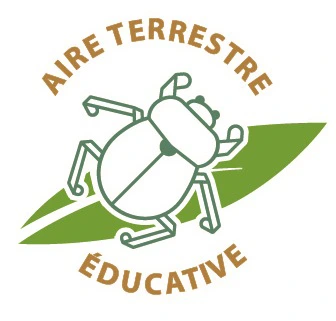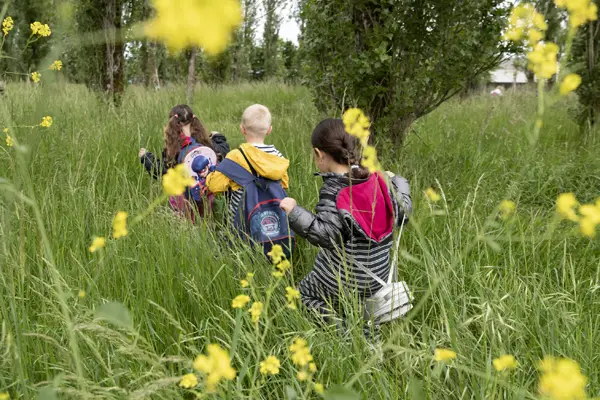Why create educational terrestrial areas?
Because a strong bond for all living things is formed at a tender young age. Environment-respectful behaviours may also be ingrained for life at childhood.
For this reason, the LIFE Terra Musiva project shall include several environmental education measures specifically aimed at these visitors, among which shall figure the Educational Terrestrial Areas (ATE).
This concept, imagined by children and encouraged by the French Biodiversity Agency (OFB), allows students to become in charge of a natural area.
Inspired by educational marine areas, the educational terrestrial areas entrust the participatory management of a small patch of humid forest, river, city park… to students and their teacher, in order to become the base for a knowledge and environmental preservation learning project.
This ecocitizen approach is based on the participatory management of an area defined by a class which creates a “children committee” in order to think out and decide how to manage their area. This approach is meant to raise the young visitors’ awareness on both protecting the territory and discovering its protagonists through an educational and ecocitizen project.
The ATE project shall include 4 goals, described as:
- Educational: the ATE are an approach on project management by the students, with the support of their teacher.
- Environmental: faunistic and floristic inventories shall be made on the chosen patches, before the students develop a management plan. Face-to-face with reality, they shall plan for the future,
- Ecocitizen: this participative approach implies working in groups and as partners, and embodies values such as respect, cooperation
- Sensitive: immersion in another environment is a sensory experience, which triggers feelings and urges, a significant aspect in the project and the students’ education.
This experience shall allow the students to both take in the ecological complexity and place themselves in a position in which they are expected to act responsibly and take decisions.
Therefore, the children shall not only learn how to discuss, debate, and take decisions collectively, with one another, but also with the other users (economic players, natural area managers…). Hence, they shall face the potential conflicting uses, along with the necessity to find consensual solutions, for them to progress.

